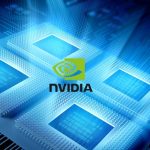In a move that may reshape collaboration in robotics, OpenMind has introduced OM1 Beta, an open-source operating system designed to work across robotic platforms regardless of manufacturer or hardware. The launch aims to address longstanding fragmentation in the robotics sector, where developers have faced challenges from closed systems and high integration barriers. OpenMind hopes the platform’s openness will prompt faster development cycles, bring down development costs, and support a wider ecosystem of robotics applications. By focusing on universal compatibility, OM1 Beta seeks to invite experimentation and innovation from developers in both research and industry settings.
Earlier initiatives in open robotics software, such as ROS (Robot Operating System), set important precedents in fostering community-driven collaboration. However, most legacy offerings required considerable adaptation for cross-hardware compatibility or advanced AI integration, prompting developers to use multiple frameworks for sophisticated applications. OpenMind’s OM1 has emerged at a time when large investments in robotics hardware have outpaced seamless software integration, often leaving promising machines underutilized. OM1 differentiates itself by explicitly targeting interoperability, multi-model AI support, and real-time autonomous functions while remaining open-source. The recent multi-million dollar funding rounds and partnerships with organizations like DIMO Ltd. indicate strong industry interest and commitment to open standards.
What Features Does OM1 Beta Offer Developers?
The OM1 Beta release presents several features intended to offer broad utility and flexibility for developers. The operating system is hardware-agnostic, supporting quadrupeds, humanoids, wheeled robots, and drones. AI integrations include plug-and-play compatibility with models from OpenAI, Gemini, DeepSeek, and xAI. Voice and vision capabilities are provided through integration with Google ASR, Riva, ElevenLabs, and emotion analytics. Preconfigured agents cater to platforms like Unitree G1, Go2, TurtleBot, and Ubtech mini humanoid. Navigation solutions such as real-time SLAM, lidar support, and path planning (Nav2) are included, alongside simulation tools via Gazebo, and a React-based user interface (OM1 Avatar).
How Does OM1 Facilitate Collaboration and Rapid Prototyping?
OM1 Beta aims to streamline robotics development by reducing the time and complexity involved in building intelligent, collaborative robots. The platform’s decentralized FABRIC coordination layer assigns secure machine identities and helps build a global network of communicating smart systems. According to OpenMind CTO Boyuan Chen,
“OM1 gives developers a shortcut to the future. Instead of stitching together tools and drivers, you can immediately start building intelligent behaviors and applications.”
By offering prototype-ready solutions for natural interaction, navigation, and simulation, OM1 Beta enables the rapid deployment and testing of robotic functions across multiple hardware types for researchers and commercial teams alike.
Why Does Open Source Matter for Robotics Adoption?
By providing OM1 Beta as open-source software, OpenMind positions itself to lower development barriers in a market often characterized by proprietary lock-in. The company says developers benefit from the ability to collaborate openly, share resources, and iterate quickly across diverse projects and robotic platforms. OpenMind emphasizes the importance of this approach with the statement:
“Robots shouldn’t just move — they should learn, adapt, and collaborate,”
according to Jan Liphardt, CEO of OpenMind. With documentation, community support, and code available on GitHub, OM1 Beta seeks to broaden the contributor base and drive adoption at a pace comparable to the software industry’s rapid progress.
OM1 Beta’s release signifies a larger movement toward standardization and accessibility in robotics software. For professionals and researchers, an interoperable platform unlocks opportunities for scalable deployments and cross-industry collaboration. Users interested in developing robotics applications using OM1 should consider its compatibility with multiple AI models and pre-existing hardware, which can ease both prototyping and real-world testing. Keeping the platform open-source, supported through community channels, encourages adaptation and extension, which could lead to more robust and flexible applications. The combined focus on interoperability, autonomy, and developer-centric design in OM1 positions it as a potential staple for future robotics software projects in diverse environments.










